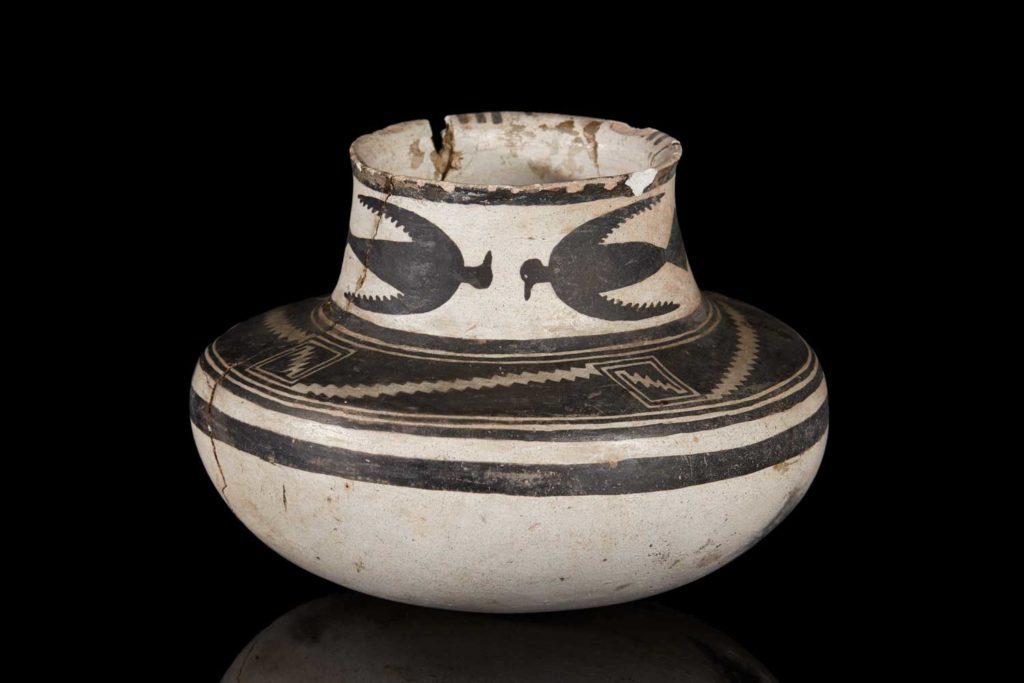
This earthenware jar is a wonderful example of Puebloan pottery made during the late 13th century. Natural elements such as the rain, the sky, birds, plants and animals are traditionally used to decorate their work. This is a fine object, with striking geometric and linear patterns, and four birds in flight encircling the neck of the jar. The distinctive black on white colour scheme is also typical of this period.
The Pueblos are Native American people, living in the Southwestern United States and northern Mexico who share similar cultures and traditions. They have been working with clay for around 2,000 years. Pottery vessels were an everyday essential, used for cooking, storing food and carrying water. They were also used ceremonially and for trading. The opening up of the country in the 19th century with the expansion of the railroads and the development of tourism offered new opportunities and new markets to the Puebloan potters.
The Pueblo create their pots using traditional methods handed down through the generations. From basic ingredients – local clay, dug from the earth by hand, and water – they produce objects of exceptional beauty. Their methods today are largely unchanged from those used a thousand years ago.
Puebloan pottery is made using a coiling and scraping method. The clay is prepared and then rolled in long ‘sausages’ which are firstly spiralled to make a base, and then coiled upward to make the walls. The walls are scraped and smoothed using sticks or gourds. Left to dry in the air, the pots are decorated using water mixed with clay and either vegetable or mineral dyes. The Puebloans traditionally used brushes made from yucca leaves or tiny twigs. Once completed, the pots are fired in an earthen pit, often using animal dung for fuel.